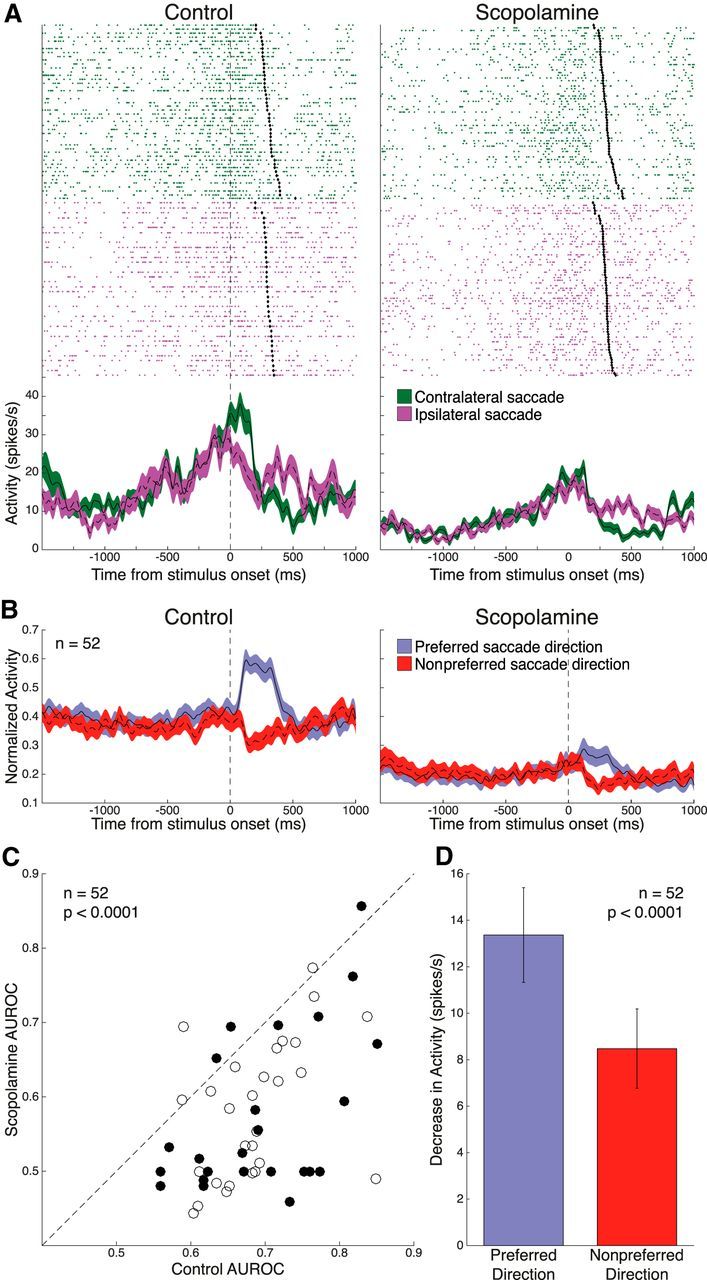Figure 6.

Effect of scopolamine on saccade direction selectivity in the stimulus epoch. A, Single-neuron spike rasters and smoothed spike density functions of contralateral (green) and ipsilateral (purple) saccade direction trials, for both control and 70 nA scopolamine conditions. Stimulus epoch begins 70 ms after stimulus onset and ends 120 ms after saccade onset (black diamonds). B, Normalized population spike density functions of preferred and nonpreferred saccade direction activity in control and scopolamine conditions for 52 significantly saccade direction-selective neurons. Scopolamine decreased both FR for preferred and nonpreferred direction and saccade direction discriminability in the stimulus epoch. C, Scatter plot of control AUROC values (open circles represent Monkey O; filled circles represent Monkey T) compared with AUROC values in the scopolamine condition. AUROC values after scopolamine application were below the equality line, indicating reduction in saccade direction selectivity. Population AUROC values were significantly reduced by scopolamine. D, Scopolamine elicited a stronger decrease in population FR for the preferred saccade direction in the stimulus epoch, compared with the nonpreferred saccade direction. Error bars indicate SEM. Significance was determined by Wilcoxon signed rank test.
